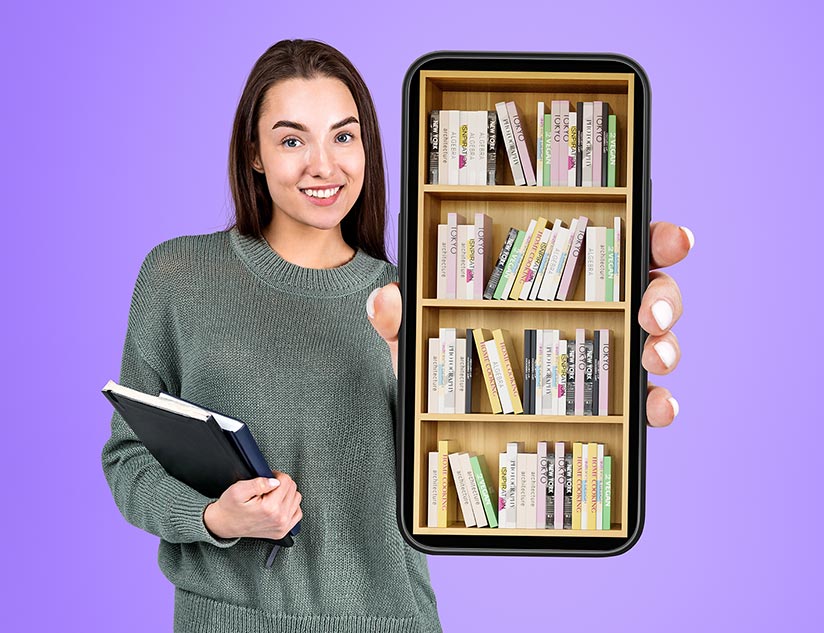Preparing for Tomorrow’s Learners: Advanced Content Delivery Strategies
August 10th, 2023
Planning the pedagogy and content distribution are paramount to ensuring effective learning assimilation across different types of learners across K-12. There is no one-size-fits-all technique to deliver learning content. The most appropriate way to ensure learning outcome achievement and DEI in education is to use a mix of strategies identified by assessing learner needs. It should include education goals, teaching/learning dynamics, assessment and evaluation practices, and individual learning styles. Additionally, content delivery decisions should align with learning requirements at an ecosystem level.
Traditional learning solutions often lack practicality and do not account for the diversity in learner groups. They fail to foster critical and creative thinking among learners and do not accommodate today’s self-driven, anytime-anywhere learning requirements. This is where advanced AI-powered digital learning platforms can support publishers and educators in transforming content delivery and distribution to enhance the learning experience and outcome achievement.
Addressing Common Challenges to Content Distribution with an Advanced Content Delivery Platform
Effective content distribution helps publishers and edtech firms establish industry leadership and improve brand awareness. However, it comes with its own challenges.
Bandwidth and Infrastructure Limitations
There are still regions with only 2nd or 3rd-generation Internet connectivity, which needs to be more consistent. These regions need digital learning solutions with offline access to ensure continued learning. Cost-effective digital learning platforms for content distribution can eliminate the need for huge investments in comprehensive technology infrastructure.
Accessibility and Inclusivity Concerns
Content distribution means much more than reaching more regions. It means providing better opportunities for learning to those who already have access but need more effective content delivery strategies. Facilities such as audio assistance for the visually impaired, voice commands for learners with motor skills challenges, etc., make content accessible across the learner spectrum.
Further, multimedia integration and gamification of learning boost engagement. Effective content delivery begins at the design stage. Therefore, ebook publishing and distribution platforms must facilitate the creation of deliverable content that ensures better inclusivity and accessibility for learners with special needs.
Security and Privacy Considerations
Growing digitization has undoubtedly raised concerns regarding the security of learners, especially for the K12 segment, which is still learning how to be better citizens of the digital community. This calls for a content distribution platform to ensure compliance with privacy and digital learning standards, such as FERPA, COPPA, GDPR, and WCAG 2.0.
Content Organization and Categorization
An essential digital learning task is content organization that allows easy reuse across diverse learner levels, including learners with special needs, slow assimilators, refresher learners, etc. The content design and planning should also consider assessment and report generation for different types of learners. Modern solutions allow educators to create learning journeys that repurpose content seamlessly.
Effective Content Distribution Strategies
Content chunking and microlearning are the most effective techniques by which digital content distribution platforms are helping educators define unique learner journeys with bite-sized learning material and customized assessments aligned with individual goals.
Mobile learning and offline accessibility are paramount in the age of on-the-go education. They facilitate self-driven learning. AI-enabled learning assistants resolve learner queries 24/7, without the need for the availability of human teachers at all hours.
Learner analytics and assessments help automate the assignment of micro-courses according to individual learners’ skill and knowledge requirements, enabling personalization and adaptive learning.
Learning Management Systems (LMS) and Content Management Systems (CMS)
Advanced content distribution platforms are integrable with diverse LMSs and CMSs to power education across learning environments. These platforms are equipped with AI-powered suggestive inputs and predefined templates to assist content design using data related to learning outcomes and student needs. They facilitate complete online, offline, hybrid, and flipped classroom models.
Best Practices for Implementing Content Distribution Strategies
Embedding data analytics for learner progress, content efficacy, and DEI capabilities can provide adequate feedback to educators to improve their content design and delivery strategies.
A few of the best practices to adopt are:
- Conducting needs assessments.
- Involving educators and other stakeholders in the decision-making process.
- Choosing the right technology and tools.
- Ensuring content accessibility and compliance.
- Measuring effectiveness and making data-driven improvements throughout the process.
Preparing Digital Learning Platforms for Dynamic Learner Needs
On-demand learning content, customizable to hybrid learning environments and individual learning goals dynamically is the future of education. A digital learning platform for content delivery, designed for contemporary learner and educator needs, should be equipped with the capabilities of an ebook publishing and distribution platform of the future. This will allow it to facilitate content distribution across K12 and higher education. Partnering with an experienced digital content distribution platform provider can help educational publishers reach a broader audience and meet individual needs at scale.
Contact MagicBox™ to elevate your offerings with our digital learning platform for content distribution.













